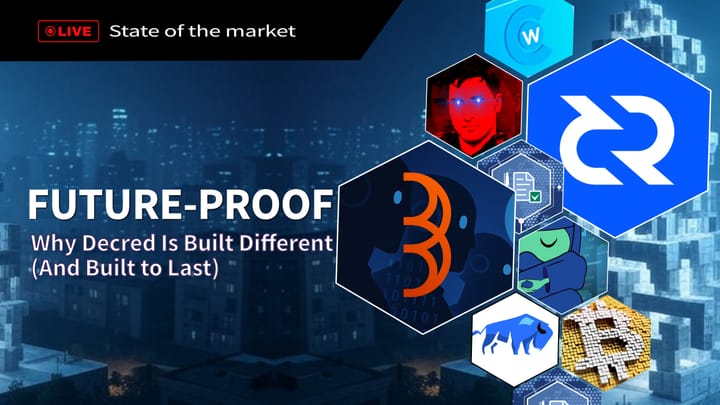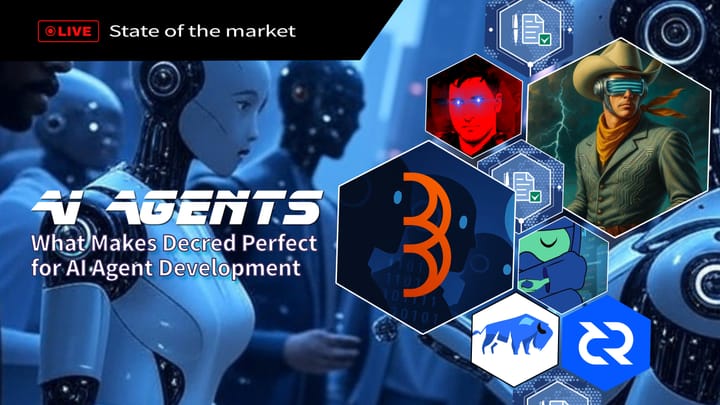Decred’s Blockchain Mining Revolution – Moving Blockchain Forward
One benefit of not being pure proof of work is the ability to choose the profitability of the miners.

LISTEN TO THE PODCAST:
Cryptocurrencies and digital internet money are extremely young and, as such, the ability to adapt to the changing environment will be critical. Principles, ideals, and theory that were once valid and seen as the immovable cornerstones of the space have mostly all been proven fragile when put to the test.
The idea that a piece of software or hardware will be as strong in the long term as it is today is a flagrant lie. Without the ability to formally change when needed, it will lead projects to be manipulated and exploited at the will of those who seek to game the system and profit. Take for instance Decred’s original theory regarding ASIC mining.
The original thought was Decred should be ASIC compatible to provide the highest possible levels of security. During the first four or so years, this was indeed true. Without the highest possible levels of hash power, Decred would have been vulnerable to a multitude of attacks, this was mainly due, to the proof of stake component required time to establish and distribute to provide stability.
- ASIC’s provide highest levels of security
- ASIC’s will prevent 51% attacks
- High hashrate is needed until POS establishes
For many years, the thought of being ASIC resistant was a futile endeavour. To this day, for the majority of pure proof of work chains, this is still the case. The reasoning behind this is mainly down to the cost of attack, profitability, and excessive hash power from CPU and GPU mining farms.
“ASIC resistance will break once profits become high enough to incentivise participation”
ASIC mining offers security by countering theses points, for example:
- They are specialist hardware built for a singe purpose or hashing algorithm, E.g. SHA256 or Blake256.
- A single ASIC unit is, 1000x more powerful than a single GPU miner and tens of thousands more powerful than CPU mining
- They are costly to purchase and are generally in limited supply
- They are expensive to run. All for which needs to be factored in when mining
Decred’s turning point
When the table’s turned for Decred, and ASIC miners were found to be acting against the best interests of the chain, research was conducted to see what could be done.
One benefit of not being pure proof of work is the ability to choose the profitability of the miners. Making the coin less profitable would reduce the hash power and possibly diversify it. In the first consensus change, the miner block reward went from 60% to 10%. This had the desired effect of reducing the hash rate from approximately 500/ phs to 50/ phs, but did very little to distribute the hash power.
One possible reason for this, in the early days of Decred, very deliberately, the team selected Blake256 as its hashing algorithm for its efficiency and because it wouldn’t be completing with other chains for hashing power. For example, those using SHA256 will be complete with Bitcoin, and its multitude of spin-offs.
Moving from Blake256
Although this helped in the early stages of the project, the problem now, Decred was still the only project mining with the Blake256 algorithm and the machine existed with no other use. They would continue to be used to mine Decred until their dying days. The likelihood of a new, improved ASIC machine becoming available for Blake256 is extremely low. And because an ASIC is mining, no other machine would be able to. As Dave Colins said in a recent interview, these machines had already paid for themselves 10 times over, so the advantage to keep mining was yet again given to the same destructive entities.
The next step, remove the Blake256 algorithm to remove the current ASIC miners, and lower the profitability even further to reduce the likelihood new ASIC miners being manufactured. Decred reduced the mining reward down to 1% and changed to the Blake3 algorithm for mining. To my knowledge, Blake3 is also not used by any other project, which further reduces the competition factor.
Although it’s unlikely that Decred will ever be fully ASIC resistant, this move levels the playing field. Some interesting side effects are:
- Decred is no longer reliant on specialist hardware, hardware, consequently, that wasn’t being built.
- Decred can now be mined by anyone with a standard computer with GPU capabilities
- GPU and CPU farms are unlikely to mine the project due to low profitability
- GPU miners can’t hit-and-run Decred’s new algorithm due to the mining difficulty changing each block. This also makes it more profitable for people that continually mine and become part of the network.
- This also increases the network effect as miners are now likely to be more integral to the project. Rather than a parasitic external entity draining the project of its resources and hard fought for gains.
With this latest change, Decred’s mining hash rate has gone from approximately 50/phs to a fraction of a petahash. Making the project one of the most environmentally friendly cryptocurrencies in the space, whilst still maintaining an extremely high level of security due to the effectiveness of its proof of stake element.
“Coin Holder Participation - Coin holders can now participate in every aspect of the project - Mine, Stake, Hold, Vote”
As the reward reduces further in years to come, my expectation is that the hash rate will continue to fall. Which is the same as what would have happened under the last algorithm. Only now, rather than being powerless to participate, coin holder will be able to take up the mantle, of keeping the chain running, with very little effort, computer hardware or financial outlay.
The ability to change and adapt has effectively moved Decred into a whole new era of decentralisation and helped the project remain true to its core values. When Decred and its stakeholders see a problem, they have an uncanny habit of hitting it head on, and removing it from the ecosystem.
The revolution will not be centralised!





Comments ()